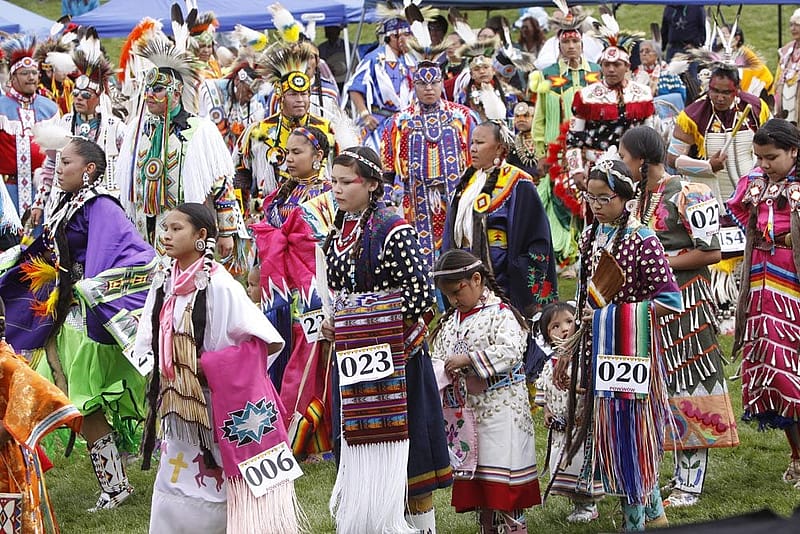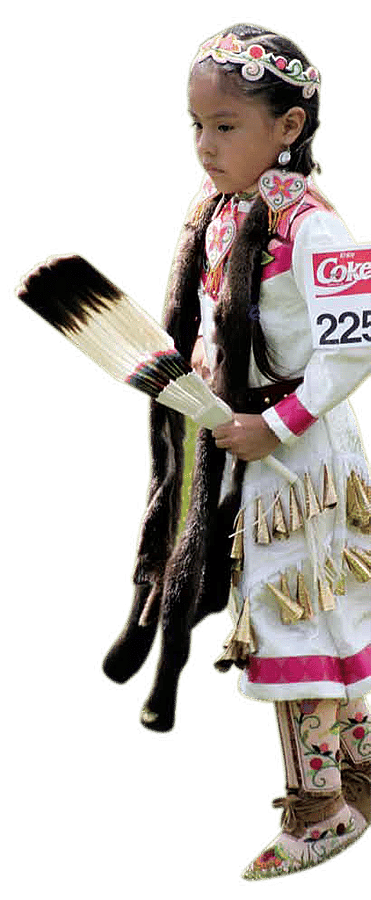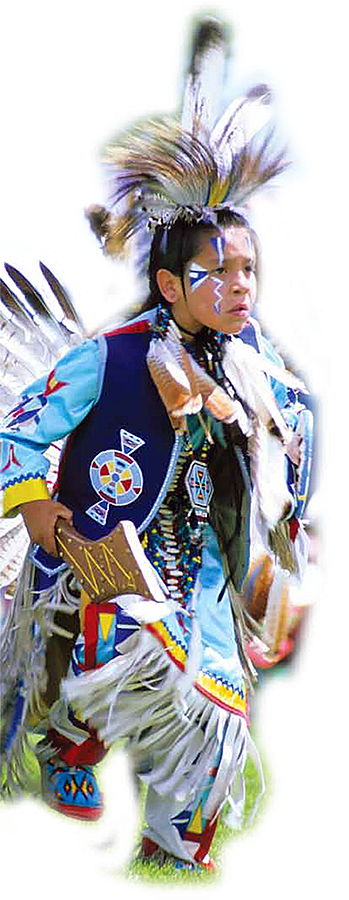
Powwow, Preserving Tradition and Promoting Cultural Exchange – Points West Online
Originally published in Points West magazine
Winter 2012
Powwow: Preserving Tradition and Promoting Cultural Exchange
By Sienna C. White
For this article, Sienna White, 2012 summer intern at the Center of the West, and former Codyite, interviewed tribal leaders and powwow participants about the history of the event and its significance today.
As the prestigious Plains Indian Museum Powwow in Cody, Wyoming, readied for its thirty-first year, longtime participants reflected on the meaning of powwow, both as a way to preserve Native American traditions as well as a means to share those traditions with others. The Plains Indian Museum Powwow is unique from other powwows for several reasons, but most evident is that the hosting institution, the Buffalo Bill Center of the West, houses Native American artifacts and history, as well as non-Indian artifacts. The Center’s collections relate the story of the American West as well as the natural history of nearby Yellowstone National Park and Cody’s surroundings. This melding of cultures and ideas is mirrored by the inclusive nature of the Powwow, its participants, and its audience.
Corky Old Horn
Corky Old Horn, who has participated in the Powwow in a variety of roles for the past twenty years, shares his thoughts on its value as he briefly laments the detrimental effects of globalization on traditional languages and belief systems. Old Horn and his family have been instrumental in the growth of the Plains Indian Museum Powwow since its beginnings at the Cody High School football field in 1982. Most recently, he’s filled the position of emcee, a role in which he must strike a careful balance: conveying tradition and history for visitors without lessening the authenticity of the Powwow for those participating in the competition.
Old Horn believes that, for the most part, powwow is a good thing. “This is especially true for the young people who can tie beliefs and cultural ways to something they enjoy,” he explains. “The sad aspect is that, for many, the powwow is their only tie to their Native American heritage…language and traditions are being lost and nothing can replace that.”
Adeline Fox
Adeline Fox—Northern Cheyenne and member of the Plains Indian Museum Advisory Board—teaches at St. Labre Indian School in Ashland, Montana, a school that serves both Crow and Northern Cheyenne students. Each day she witnesses the assault of technology and text messaging on tradition and culture. However, she has not lost hope that powwow and traditional Native life will survive and thrive for generations to come. Fox comes from a very traditional family and has been dancing for as long as she can remember; she has attended the Plains Indian Museum Powwow for at least twenty-five years and now brings her grandchildren.
When asked how she perceives the overlap of technology and Native American life, Fox responds, “I don’t know; I think some of our people get distracted a lot and are carried away with their new technology. [Consequently] families don’t learn how to interact. The technology distracts from our traditions and tribal ways. Young people don’t want to learn traditions; they want to text [on their cell phones]. The technology—it talks to them, and so when you talk to them, they don’t hear.
“Ours is an oral tradition,” Fox adds, “and this is counteracting that.” Although Fox believes that powwow is an important and positive contributing factor in handing down tradition, she explains, “Home life and family traditions play a bigger role in
respect for tradition than powwow, i.e. each [family and tribe] has their own way of doing things. We all come together and share those things with each other, recognize each other, and teach respect.”
Gary Goggles
Despite the beliefs of many that texting and hip-hop music could contribute to the downfall of future generations—Native American and non-Indian teenagers alike—Gary Goggles, long time Powwow participant and the head judge of last summer’s competition, has a very different take on technology. As he puts it, “With a cell phone and Facebook, everything is instantaneous; so even from a powwow you can instantly send a picture and say, ‘Hey, I’m here enjoying myself and learning about my heritage.’ You can say a lot of good things with social media.”
Goggles, Northern Arapaho and also a Plains Indian Museum advisor, believes that the powwow teaches not only Native American culture, but also camaraderie and compromise, concepts that benefit all people. “They [visitors] come to powwow and see the camaraderie among different tribes and the relationships that are made and the goodwill that exists among people…people in general; they see how to get along—even with tribes that hold different beliefs. That’s the way that Indian people have gotten along through the years; it’s always been that way.”
Discussion of tradition and customs versus the unstoppable force of technology is an age-old debate, and only time will tell how it eventually plays out. One thing is certain, though, the Plains Indian Museum Powwow continues to be a unique event which encourages cultural exchange, promotes universal understanding, and provides a jumping-off point for conversations about the evolution of tradition and the importance of remembering one’s heritage.
The Annual Plains Indian Museum Powwow, the longest running public program of the Buffalo Bill Center of the West, takes place the third full weekend of June. Find out more here.
Sienna White, a Cody, Wyoming, native, spent the summer of 2012 working as an intern in the Buffalo Bill Center of the West’s Public Relations Department. She has a bachelor’s degree in psychology from the University of Wyoming and, following her internship, planned to attend law school at Case Western Reserve University in Cleveland, Ohio, studying human rights law.
Post 202
Written By
Nancy McClure
Nancy now does Grants & Foundations Relations for the Center of the West's Development Department, but was formerly the Content Producer for the Center's Public Relations Department, where her work included writing and updating website content, publicizing events, copy editing, working with images, and producing the e-newsletter Western Wire. Her current job is seeking and applying for funding from government grants and private foundations. In her spare time, Nancy enjoys photography, reading, flower gardening, and playing the flute.













